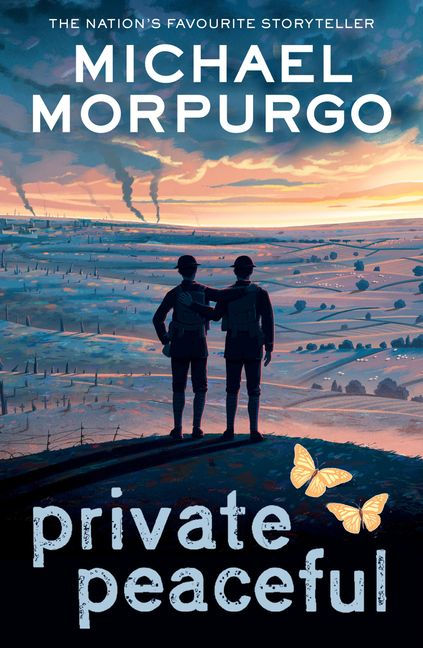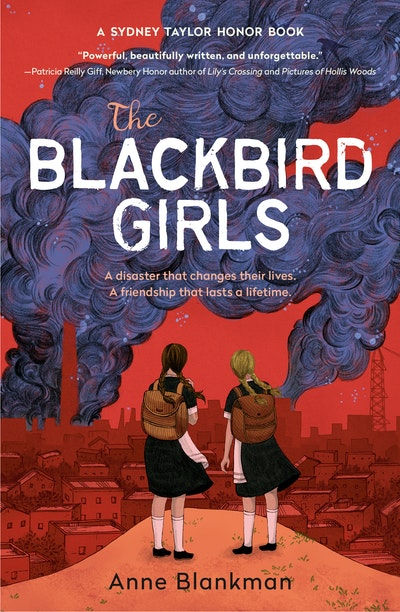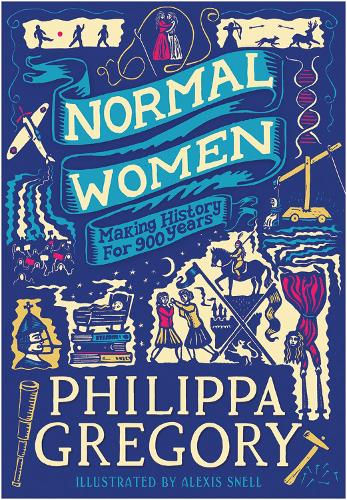Historical Fiction
- schoolbookwizard
- Jun 24
- 8 min read
Updated: Jul 7
Historical fiction has always been a favourite genre of mine and it continues to be my comfort blanket when it comes to books. Having read so much of it throughout many different ages and stages of my life, I have become something of a snob when it comes to this genre and so nowadays anything I read has to be rather exceptional for me to like it…so here is my pick of middle grade and YA historical fiction I’ve read recently that passed the test!
Click here to listen to my segment (Tuesday 24 June 2025) talking about some Historical Fiction worth reading on 'Afternoons with Jesse' on Radio New Zealand.
For Ages 10/11

Private Peaceful
(WWI)
By Michael Morpurgo
Published in 2003
I’ve talked about a couple of different Michael Morpurgo books recently, he is an established and experienced middle grade author and a safe pair of hands, especially when it comes to his speciality – historical fiction. His books are often terribly poignant and sad, taking on some of the hardest themes of war, but done with compassion, sensitivity and always leaving the reader with an uplifting feeling that there is always hope.
This book is about two of the Peaceful brothers (hence the title, though in this story it VERY much carries a double meaning), Tommo and Charlie, serving together on the front line in France during WWI. The story is seen through the perspective of one of the brothers, who for the duration of the story is sitting alone one night, thinking back over his short life (he is only 18), while time moves towards some unknown event.
Private Peaceful deals with the British Army practice during WWI of executing its own soldiers for ‘cowardice’, though it is now recognised most were suffering from severe PTSD (or shell shock as they called it then). 307 Commonwealth soldiers – including 5 New Zealanders – were executed by firing squad between 1914 and 1918, a number which is likely to actually be much higher because the number of Indian soldiers who were in British service and faced the same fate has never been recorded.
It is a harrowing and difficult subject to deal with for adults and Morpurgo is unflinching in his portrayal of the gross injustice of this practice and the impact not just on family left behind (widows of soldiers shot for cowardice were also ostracised by their communities at home and were refused by the government the same pension and benefits other widows got) but also on the comrades of those soldiers. By turning the Peaceful brothers into relatable young men, Morpurgo has taken what are distant, intangible historical statistics and made them flesh and blood for middle grade readers, turned them into lives that mattered.
For Ages 11/12+

Rabbit Soldier Angel Thief
(WWII)
By Katrina Nannested
Published in 2021
It seems counterintuitive but war, especially WWII, is a hugely popular theme with young people, so there are a great deal of middle grade and young adult books out there set during World War II and – as is always the case – some are better than others. What makes Katrina Nannested’s books stand out is that her stories come from points of view not often seen in books about WWII, like this one, the story of the German invasion of Russia.
Set in Russia as the German army invaded, the story is based on an actual historical young boy, who became known as the Angel of Stalingrad. Sasha is only 6 years old when his village is invaded by the advancing German army. Suddenly, his mother, sister and all the friends he has ever known are gone and he is left all on his own trying to survive. He is discovered by a Russian army unit, who take him in and protect him as the Germans army advances further and further into Russia, until Sasha and his new adoptive family are trapped during the Siege of Stalingrad (now Volgograd).
Told through a traumatised Sasha’s flashbacks while recovering in hospital, at least the reader already knows that Sasha survives, but the format of the storytelling also makes it clear that not everyone in his story is going to, so there is a real tension as the narrative unfolds and the reader becomes more and more fond of the characters Sasha talks about. Historically accurate (or as historically accurate as middle grade fiction needs to be!) but also realistic in its portrayal of the trauma and PTSD that Sasha is experiencing after everything he saw and went through (which is noteworthy because most YA and tween fiction have children facing these traumatic events, but bravely soldiering on and coming out of it all unscathed - it is an unrealistic and unhealthy example for young people) but still very well aimed and entirely appropriate for this age group.

The Blackbird Girls
(Chernobyl Disaster – 1986)
By Anna Blankman
Published in 2020
Another unusual topic for a middle grade fiction novel – and another one set in Russia…well, actually the Ukraine…and then Russia.
Anna Blankman’s story starts in the town of Pripyat, in the Ukraine, which was founded to house the workers of the Vladimir Ilyich Lenin Nuclear Power Plant, which has been forever seared into history as Chernobyl, after the small historic city near the power plant.
Teenage girls, Valentina and Oksana have always been arch enemies, even though they live in the same building and their fathers both work at the nuclear power plant, but on April 26, 1986, everything changes. When the town is finally evacuated, astonishingly over 24 hours after the incident at the power plant, with her father confirmed dead and her mother deemed too radioactive to travel, Oksana finds herself having to rely on Valentina’s family to take her in. The girls must make their way alone to Leningrad to find Valentina’s estranged grandmother.
Meanwhile, another story unfolds in 1941, the story of Rifka, a young Jewish girl running for her life in front of the advancing German army.
This is truly fascinating and very clever story – Blankman makes it very clear how much was kept from the citizens of the town, the entire population of the Soviet Union and the world about what had happened at the Chernobyl power plant. People in Pripyat continued to live their normal lives, spending time outside, showering and drinking the water for hours and hours after the explosion and even when they were finally evacuated, no one understood what the full impact of what has happening.
The story is actually much more about life in communist Russia than anything else – Valentina’s family is Jewish – at a time and place where it was (still!) illegal to be a practising Jew and there was still the ingrained, historical hatred and suspicion of Jews. The inclusion in the story of the Jewish Rifka during the war adds an extra layer of understanding and there are lots of fascinating elements to life in Russia at the time, like Valentina’s grandmother living in a building with a communal kitchen and bathrooms.
There is plenty of tension and many threads to the story including one of domestic violence, which needs to be noted as a trigger warning, but even with all that trauma and complicated, political themes, it is still well aimed for this age group and eminently accessible.
For Ages 13+

The Phoenix Crown
(San Francisco Earthquake – 1906)
By Kate Quinn and Janie Chang
Published in 2024
Another unusual historical event for a fiction novel.
Kate Quinn is one of my favourite authors – her historical fiction, which often focuses on women who made an impact on history but whose stories are little known or acknowledged, is always rich, detailed, exciting and engaging. This one is a little different – neither of the two main characters in the book are based on real historical women, the setting, the time and all the details around the focal event of the book (the 1906 earthquake) are all very real. Though worth noting that one of the secondary characters IS based on a real (and rather remarkable!) woman.
At the centre of the story are young women, Gemma and Suling, who are our narrators. Gemma is an operatic soprano who comes to San Francisco in to stay with her best friend, in the hopes of furthering her career as a singer, while Suling lives in Chinatown with her immigrant parents and is desperate to escape an arranged marriage. Like all Quinn’s book the story is driven by a mystery – Gemma has not heard from her best friend for months and when Gemma finally arrives in San Francisco, all anyone can tell her is that her best friend in the world left without her, with no message or forwarding address. And then she meets the mysterious Henry Thornton.
Quinn, and her writing partner Janie Chang, really bring turn of the century San Francisco to life, the opulent and luxurious lives of the wealthy, ‘new money’ industrialists, the expectations on woman at the time, the busy, cramped world of Chinatown, the contrast of the expectations and traditions of the immigrants and their American born children, who want a different life with different rules. But the real art of this book is the depiction of the city as the earthquake hits…the careful research these two authors must have done shows through as their characters live through the terrifying hours and days after the earthquake.
A clever mystery with more twists and turns than a usual Kate Quinn novel, but the same rich historical detail and atmosphere and exciting, engaging characters.
For Ages 14+

The Terror
(Franklin Expedition to the Arctic – 1845)
By Dan Simmons
Published in 2007
The TV series based on this book (currently showing on TVNZ+ for anyone interested) is probably more well known than the book, but personally I think the book is much better.
The Franklin Expedition left England in 1845 with the aim of discovering the mythical ‘north-west passage’ (the obsession of the age) – a clear water passage through the north linking the Atlantic and Pacific Oceans. The expedition set off with two ships (HMS Erebus and HMS Terror – personally, I wouldn’t sail on a ship called ‘Terror’ but maybe that is just the benefit of hindsight talking!) and 129 men. It was one of the best stocked expeditions ever launched, the ships’ hulls reinforced with extra wood and iron, and commanded by two extremely experienced polar explorers. In late July 1845 they were seen by whalers in Baffin Bay in Canada getting ready to head up into the ice – they were never heard of again.
Several years too late, the British Admiralty eventually sent rescue teams to try and find out what happened to the two ships, they found several bodies, artefacts in several different areas and confused and badly interpreted accounts from the indigenous Inuit people of seeing the ships and their crew, but were never able to find any concrete evidence of what had happened to the expedition. It has only been in the last 20 years that advances in technology, polar exploration equipment and weather tracking, has allowed the discovery of the wrecks of both ships and allowed a realistic reconstruction of what happened after July 1845.
This book is Dan Simmons’ interpretation of what might have unfolded on the ships over the several years it has now been proved the ships and their crew sat trapped in the ice, during some of the coldest winters in hundreds of years, slowly running out of food and freezing to death. His story is exciting, grim, dark, claustrophobic and ultimately sad. Simmons’ main focus is a clever supernatural element, an Inuit spirit, who has been angered by the arrival of the foreigners who don't respect the land, the ice or nature, who take what they want and put everything out of balance. The supernatural is interwoven with known facts (like the Admiralty choosing the cheapest quote for the expedition supplies and not checking up on their processes, meaning much of the canned food the ships carried wasn’t sealed properly so it was spoiled and inedible and what could be eaten was contaminated with lead poisoning leaking from the faulty seals), but it is definitely the terrifying presence stalking the trapped crew that makes the whole story.
Simmons’ writing is atmospheric, suspenseful and holds real insight into human nature. Pushed to the ultimate limits of survival in an environment determined to rid itself of the interlopers, suffering from scurvy, frostbite, lack of sleep, lack of sun and slowly being driven mad by lead poisoning, with the constant tension of being hunted by an unknown, sinister presence, Simmons captures and portrays the fear, madness and desperation perfectly. A very, very uncomfortable read.




Comments